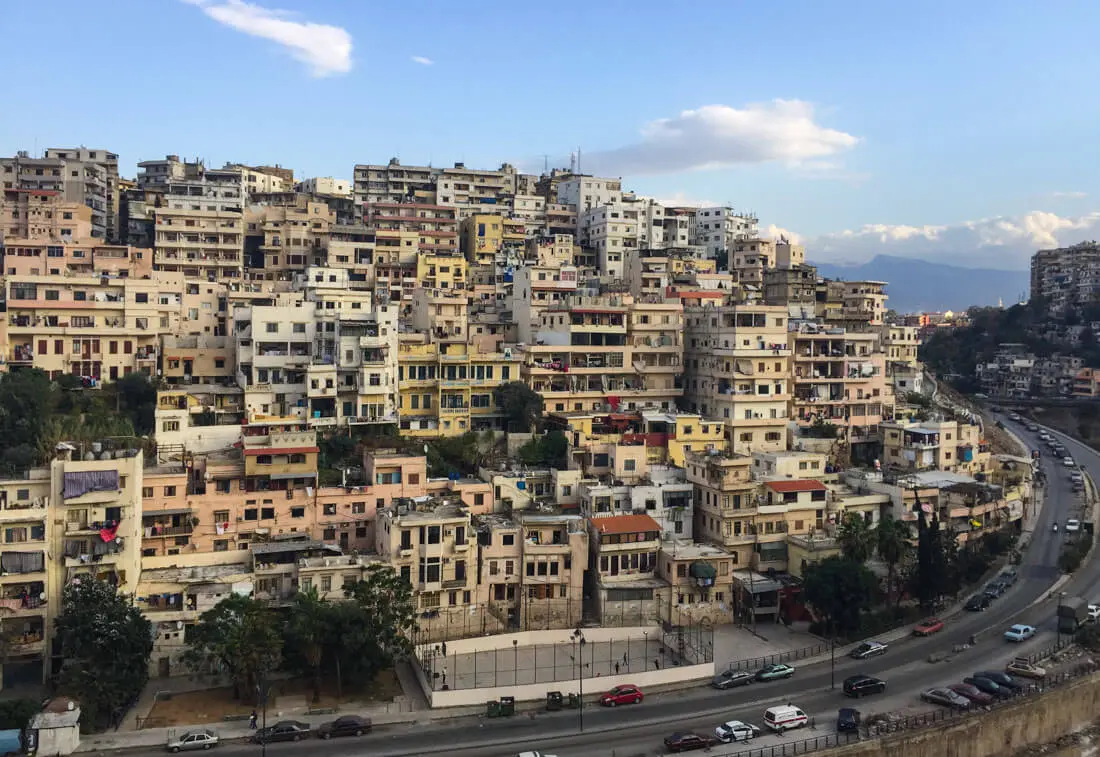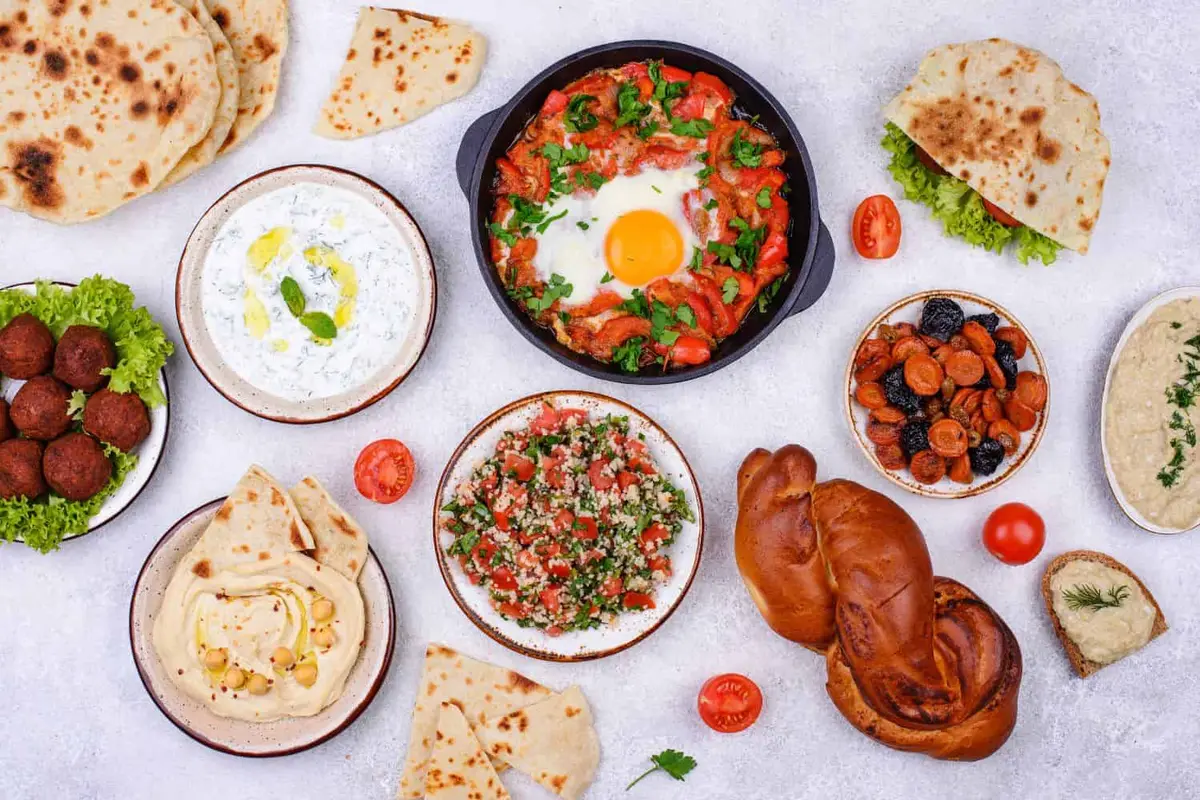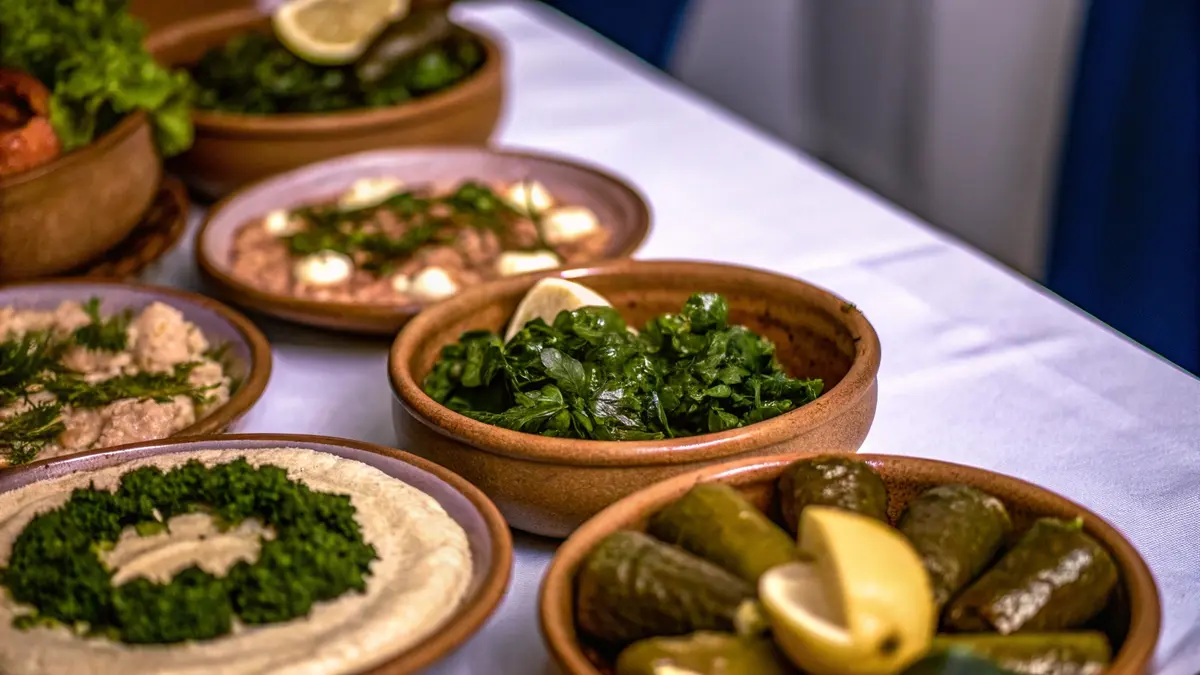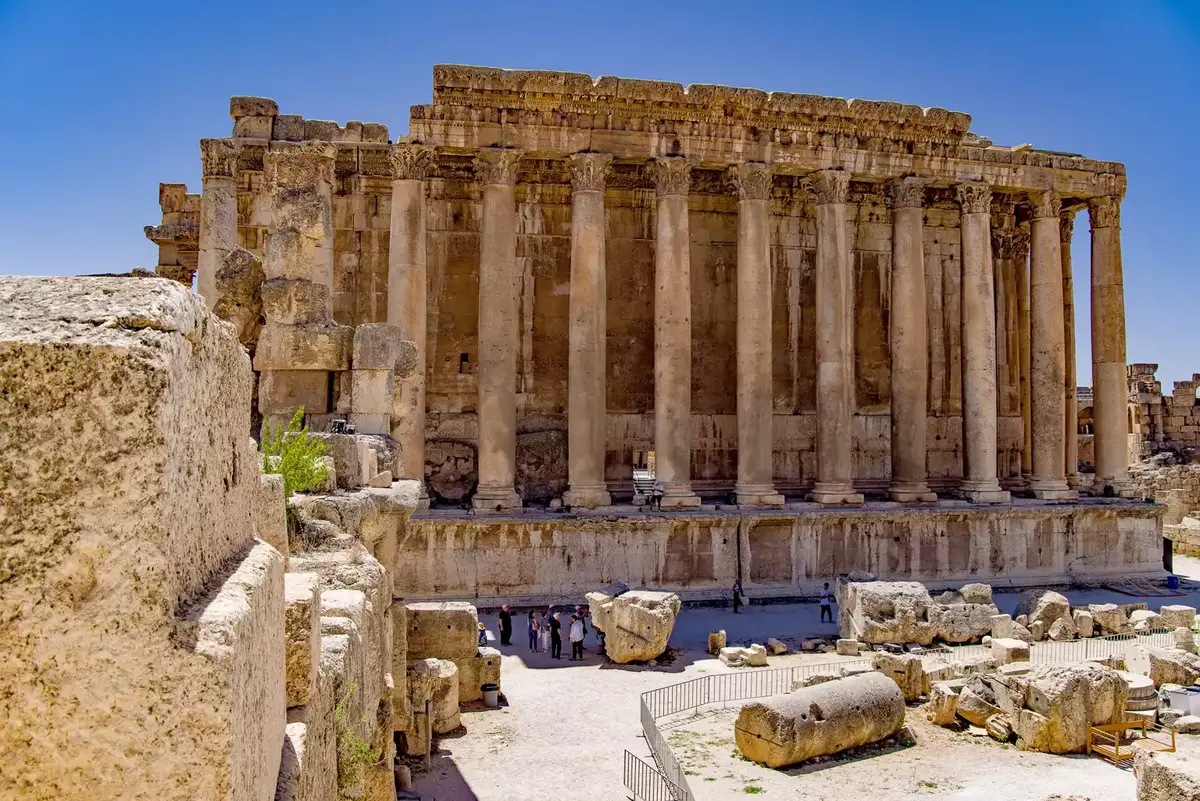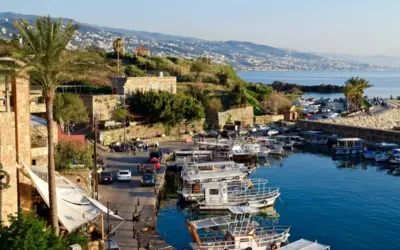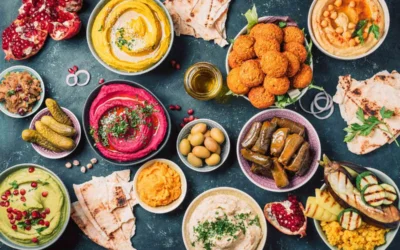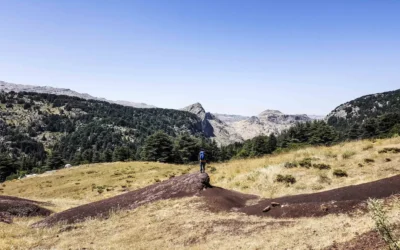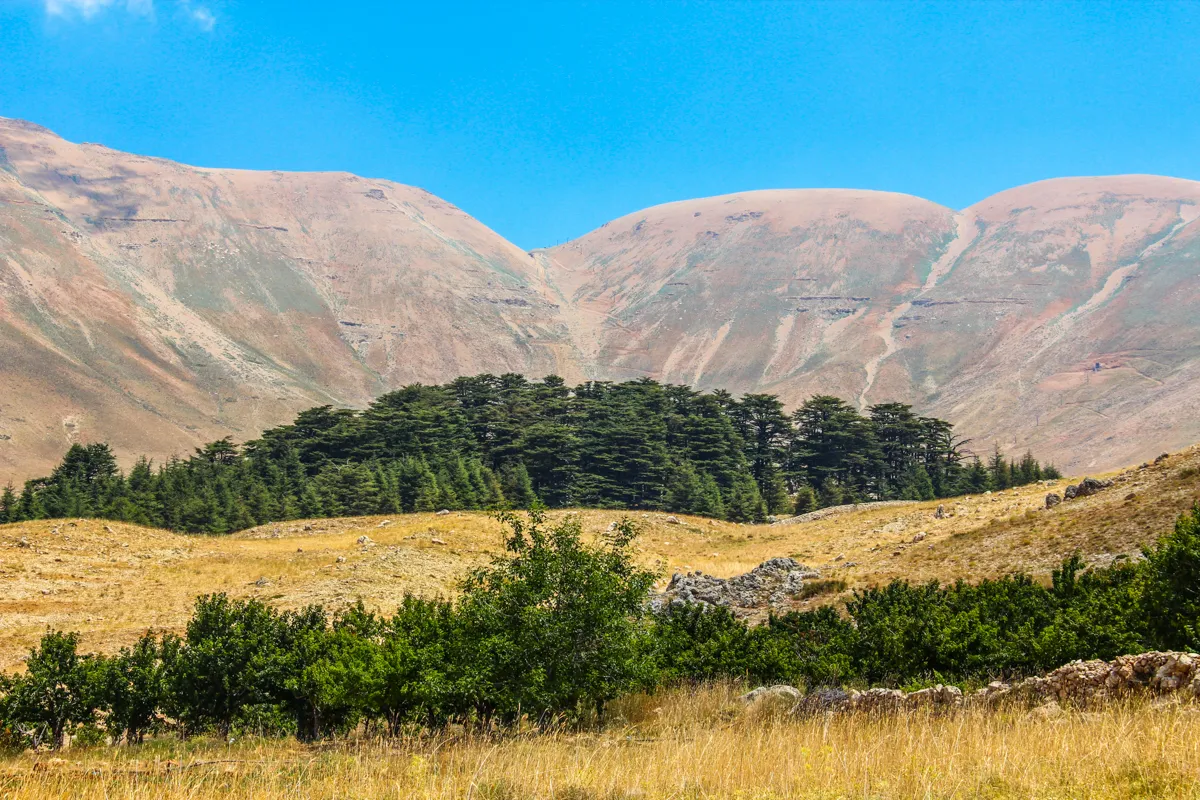Lebanon culture is one of the most misunderstood treasures in the Middle East, hidden behind decades of misleading media narratives that paint an entirely different picture from reality.
While news headlines focus on conflict zones near specific borders, the vibrant heart of Lebanon beats with 7,000 years of hospitality traditions, a thriving contemporary art scene, 18 recognized religious sects coexisting peacefully and some of the Mediterranean’s most sophisticated food and wine culture.
If you’ve been hesitating to explore this fascinating destination because of what you’ve seen on TV, you’re about to discover why seasoned travelers consistently describe Lebanon as “not only very safe but also a beautiful, interesting and surprising destination” that will challenge everything you thought you knew about the region.
Safety in Lebanon: Media Perception vs. On-the-Ground Reality
Let me address the elephant in the room first. The gap between media perception and on-the-ground reality in Lebanon is so wide that travelers report being considered “brave” for making the trip or even hiding their travel plans from friends and family to avoid “annoying questions.”
But here’s what firsthand accounts consistently reveal: Lebanon is “much safer than the news and our government-issued travel advisories would have us believe.”
Understanding Travel Advisories
As of 2024-2025, the United States maintains a Level 4: Do Not Travel advisory for Lebanon, citing the unpredictable security situation and conflict with Israel. However, a nuanced analysis reveals these warnings are highly localized to specific high-risk zones that aren’t part of typical tourist itineraries, including areas south of the Litani River near the Israeli border, the Syrian border, Palestinian refugee camps and specific southern suburbs of Beirut.
Meanwhile, life in main tourist centers like Beirut, Byblos and Batroun continues with a “merely normal” sense of vibrancy.
Local Friendliness and Atmosphere
The local population is frequently described as “incredibly friendly,” “open-minded” and “incredibly welcoming,” creating an environment that directly contradicts the media’s portrayal. One traveler perfectly captured this dissonance: his US-based contacts advised “not to go,” while his wife’s family in Lebanon was “pushing us to go, saying the airport is open, their area is safe, yalla.”
While the security situation requires awareness and avoiding specific zones, the cultural experience waiting in Lebanon’s accessible regions is unlike anywhere else in the world. Travelers who “leave the prejudices behind” discover a destination where “Lebanese teens in Beirut dressed in shorts and sneakers hanging out with friends at local bars” coexist peacefully with “locals smoking shisha and playing cards,” and where “veiled and unveiled women at restaurants sharing tea and gossip” showcase a cosmopolitan and open atmosphere.
The Non-Negotiable Entry Rule: Israel Stamps
The one non-negotiable rule: Due to the ongoing state of conflict, Lebanon denies entry to any traveler whose passport bears an Israeli stamp. For US travelers planning a multi-country Middle East trip, this is a critical logistical reality that must be factored into your plans.
The Art of Hospitality in Lebanon Culture
The most immediate aspect of Lebanon culture you’ll encounter is the profound tradition of hospitality. This isn’t passive friendliness but an active, structuring principle of society where it is considered “an honour to have a guest in your home.” One traveler’s account captures it perfectly: “I’ve never had a better breakfast, better hosts, or better conversations than I did while on this trip.”
The “Habibi” Welcome and Coffee Etiquette
This hospitality manifests most tangibly through the immediate offering of food and drink. Guests are generally served tea or coffee upon arrival, and this gesture carries significant cultural weight. Here’s the critical piece of etiquette: always accept this offer. Rejecting the coffee or tea can be “viewed as an insult” because the act symbolizes accepting the host’s welcome, and its refusal is a social rupture.
You can expect to be called “habibi” constantly (it means “my dear”), a perfect example of the culture’s warmth. This isn’t superficial politeness but reflects the collectivist nature of Lebanese society.
Family, Time and “Inshallah”
Family life is very important and forms the center of all social groups. What this means for travelers: The legendary Lebanese hospitality isn’t just something you’ll read about. Whether you’re staying at a small guesthouse in the mountains or chatting with a shop owner in Beirut’s souks, you’ll experience genuine warmth that transforms your trip from sightseeing into meaningful cultural exchange.
However, this same hospitality comes with social expectations around punctuality (which “isn’t really a thing” in Lebanon) and time, where the “Inshallah” (God willing) pace prioritizes relationships over rigid schedules.
Food as a Social Ritual: The Mezze Experience
In Lebanon culture, food is the primary language of hospitality, family and community. A meal is not a simple act of sustenance but a social framework designed to “elongate the time of the meal” and create a “social outing.” The goal is not to finish eating but to prolong the “social interaction and camaraderie.”
The Mezze: A Communal Philosophy
The Lebanese mezze (or meza) is the ultimate expression of this philosophy. It’s not a collection of appetizers but a “communal experience” that forms an entire, hours-long meal. As one cultural observer describes it, the mezze is “Lebanese culture served on a plate. It’s colourful, full of different texture and favours, simple, honest, basic, humble and lively.”
The mezze is designed for sharing, forcing interaction as diners pass plates and “discussions, jokes, and heated conversations fall in between ‘oh but you should try this’.”
One memorable firsthand account describes the “spectacle of moving tables once we are done with eating so we can have dessert on a clean table,” announced as “Tawlet el hilo jehze” (The dessert table is ready). Foreign friends watched with a “look of bewilderment” as a new table laden with fruit appeared, learning that “you don’t pay for that dessert table. It’s on the house.” When asked why, the answer captures the entire culture: “that’s just how it is. It’s the culture. Welcome to Lebanon… I believe that giving, entertaining, and our love for life is what makes us Lebanese.”
The Coffee Ritual and Fortune-Telling
Lebanese coffee, often brewed with cardamom, is a “ritual” and “symbol of generosity.” The etiquette is specific: always receive the small, handleless cup (finjan) with the right hand, as the server pours from the pot (dallah) held in their left hand, filling the cup only about one-third full. To signal you’ve had enough, gently shake the cup from side to side before handing it back.
This coffee tradition extends into a unique cultural practice called tasseography, or fortune-telling by reading coffee grounds. This isn’t just mythology but a living tradition where many cafes, such as Kahwet Leila in Gemmayzeh and Cappuccino in Achrafieh, have their own resident “coffee readers.” After drinking the thick coffee, the cup is flipped onto the saucer and the patterns left by the grounds are interpreted.
Why You’ll Fight Over the Restaurant Bill
The culmination of this hospitality performance occurs when the bill arrives. Social norms in Lebanon culture dictate that you will never split a dinner bill. Arguments tend to break out over the restaurant bill, with everyone at the table insisting that they’d be honored to pay.
This practice is so common that a Lebanese television station created a “sketch parodying two men getting in a literal fist fight over the check.” For a US traveler, this “fight” is not aggression but the final, public expression of the host’s duty and honor.
Family Loyalty and Honor in Lebanese Social Structure
Lebanon culture operates on fundamentally different social principles than individualist American society. The family unit is the “center” of all social and kin groups and forms the primary basis of a person’s identity. This family-centric structure is built on two core concepts: loyalty and honor.
A person’s “name and honour are their most cherished possessions,” and this extends to the entire family. The “behaviour of individual family members is viewed as the direct responsibility of the family.” This collectivism manifests in ways that can be foreign to US travelers. For example, nepotism is a common and expected practice where family members are obligated “to find employment for each other” as a tool for the family unit’s function and survival.
This system also places high value on maintaining “dignity, honour and reputation.” A key social goal is to “avoid causing another person public embarrassment.” This can manifest in a level of social grace that prioritizes the relationship over literal truth, such as agreeing “to perform a favour for a friend to maintain that friend’s honour even if they know that they will not do what is asked.”
What this means for social interactions: When Lebanese people invite you to their homes or offer to help, they’re not making empty gestures. These offers carry the weight of family honor and social obligation. Similarly, when locals go out of their way to ensure you don’t experience embarrassment or discomfort, they’re acting on deeply held cultural values that define their identity.
A Mosaic of Faiths: The 18-Sect System
Lebanon culture is famously diverse, and this diversity goes far beyond a simple Muslim/Christian divide. The country has no state religion, is known for its religious freedom and officially recognizes 18 total religious sects, including Maronite Christians, Greek Orthodox, Sunni Muslims, Shia Muslims and the Druze.
This confessional system is the basis of the entire political structure, with the president required to be a Maronite Christian, the Prime Minister a Sunni Muslim and the Speaker of Parliament a Shia Muslim.
For travelers, this complex demographic tapestry is experienced as a “quite relaxed” and blended daily life. A firsthand observation in the ancient city of Byblos noted the “neighboring churches and mosques, and the chic cafes that are serenaded by daily calls to prayer.” This sensory snapshot of the call to prayer, church bells and cafe life represents the lived reality of Lebanon’s multi-faith society.
The Phoenician Identity Debate
While ethnically Lebanon is 95% Arab, “disputes over labels affect ethnic identification.” Many Lebanese people identify as Arab, but others, “particularly Christian people in Lebanon, prefer to be known as Phoenicians.”
This is more than simple preference but a claim to a pre-Islamic, Mediterranean identity rooted in the ancient Phoenician civilization. Genetic research has found that male genetic variation in Lebanon is “more strongly structured by religious affiliation than by geography,” suggesting that the Islamic expansion and the Crusades created distinct genetic patterns that remain today, reinforcing these separate, deeply held identities.
Layers of History in Lebanon Culture: 7,000 Years in the Making
Lebanon culture is a “melting pot” defined by thousands of years of sequential historical and cultural influences. The “East meets West” feeling is not just a modern vibe but the direct result of a history that includes Phoenicians, Romans, Ottomans and the French, all of whom have left indelible marks on the country’s landscape, language and identity.
The Phoenicians, an ancient Semitic people, established a maritime civilization from this coast, expanding their trade and culture across the Mediterranean. This entrepreneurial, outward-looking identity is considered a foundational element of the Lebanese character.
They were followed by the Romans, who saw the area as an intellectual and economic hub of the empire. The monumental ruins they left behind, such as the temples of Jupiter and Bacchus in Baalbek, remain some of the finest Greco-Roman architecture in existence and a top tourism draw.
A 400-year period of Ottoman rule embedded many Middle Eastern and Turkish cultural practices, including the mezze tradition. However, the influence most palpable to Western travelers is that of the French. The French Mandate, which lasted until 1945, cemented a Eurocentric identity. This history explains why French is spoken as commonly as Arabic and why Beirut earned its famous nickname, the “Paris of the Middle East.”
Modern Lebanese Resilience: Art, Music and Wine
Modern Lebanon culture is, above all, an act of resilience—a “zest for life” that persists despite and because of the country’s political and economic turbulence. This resilience is not passive but an active, creative force expressed through art, music, food and wine.
The Beirut Vibe: Chaos and Vibrancy
A Beirut resident perfectly captures the city’s essence: “Chaotic and intense, Beirut is an urban jungle: heavily polluted and not always well maintained. But scattered throughout the city are true gems… cozy cafés, buzzing bars, and an impressive mix of restaurants… Life here can be tough one day and wonderfully vibrant the next.”
This vibrant social scene blends modern and traditional. Travelers observe “Lebanese teens in Beirut dressed in shorts and sneakers hanging out with friends at local bars” on the same streets as “locals smoking shisha and playing cards.” It’s a city where one can see “veiled and unveiled women at restaurants sharing tea and gossip,” showcasing a cosmopolitan and open atmosphere.
Contemporary Art Scene
This resilience is processed and expressed through a thriving contemporary art scene. Galleries like the Sfeir-Semler Gallery, the Beirut Art Center and the Sursock Museum showcase art that is often political and rebellious. Plan Bey in Gemmayzeh offers “affordable limited-edition art… graffiti stickers and political comic books.”
One such comic, Beyrouth Bye Bye, depicts the “city drowns under mountains of garbage and is attacked by crocodiles.” Similarly, the restaurant Liza features “audacious” wallpaper that replicates the “silhouettes of bombed Beirut buildings,” a direct and challenging artistic engagement with the city’s traumatic history.
The Dabke: National Dance of Unity
The dabke is the national folk dance of Lebanon and a powerful “symbol of unity, joy and pride.” It’s an energetic line and circle dance, “widely performed at weddings and other joyous occasions.” The word “dabke” itself means “to stomp” the ground.
The dance has a powerful origin story rooted in community. It “originated in rural areas” where houses were built with mud roofs that needed to be compacted. Homeowners would call their neighbors for help (‘awneh), and they would line up, hold hands and “stomp” the mud, “trampling the mud while shouting.” This act of “fraternity and solidarity” evolved from a practical function into a dance that symbolizes the “resilience… unity and communal spirit of the Lebanese people.”
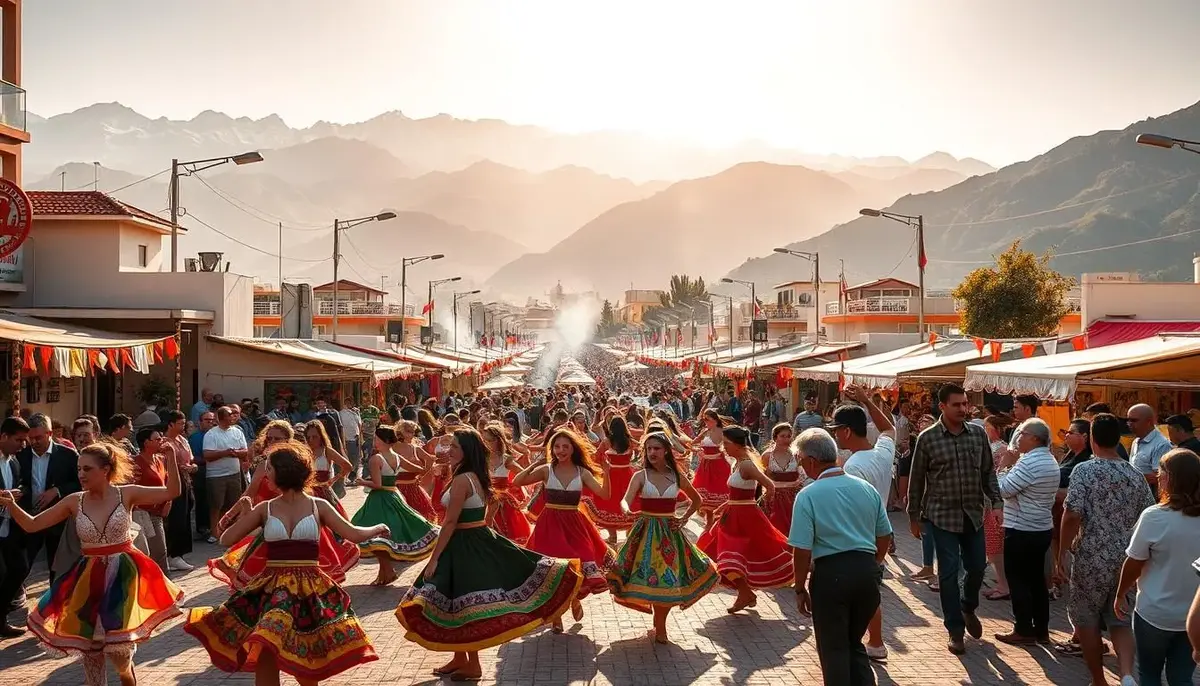
Lebanese Wine Tradition
Lebanon’s wine industry is a story of ancient history and modern resilience, dating back over 7,000 years to the Phoenicians who spread viticulture across the Mediterranean and the Romans who built the Temple of Bacchus in the Bekaa Valley. Today, a burgeoning wine tourism industry offers “unique and enriching experiences.”
Two wineries are essential for experiential travelers:
- Chateau Ksara: Founded by French Jesuits in 1857, this is the country’s biggest and oldest winery.
- Chateau Musar: Lebanon’s most internationally famous producer, legendary for its late winemaker Serge Hochar, who achieved global acclaim by continuing to produce and export wines during the 15-year civil war—a “groundwork” of resilience that defines the entire industry.
Practical Etiquette: Navigating Lebanese Social Customs
Navigating Lebanon culture is facilitated by understanding a few key social rules that blend French and Arab customs.
How to Greet Someone
Greetings are taken seriously and are “an interesting mix of both the French and Muslim/Arab cultures.” A warm and welcoming smile, a firm handshake and the greeting “Marhaba” (Hello) is universally safe and respected.
It’s important to “take time when greeting a person” and ask about their family and health—the greeting is a social ritual, not just a formality. Close friends will often use the French-style “three kisses on the cheek, alternating cheeks.”
When a man is greeting Muslim women, “it is best to see if a hand is extended or not first,” as some may not wish to shake hands.
What to Wear
This is a key question for US travelers and reveals a central cultural nuance. The most important rule for dress in Lebanon is not about modesty but about appearance and presentation. “The Lebanese place a lot of importance on appearances. It is frowned upon to be in public without appearing put together and groomed.” This means neat hair, stylish clothing and applied makeup are the norm.
For female travelers, you “generally do not need to cover up.” In major cities like Beirut and Byblos, “sleeveless shirts and skirts above the knee are acceptable almost everywhere.” However, modest clothing covering shoulders and knees is expected and required as a sign of respect when “visiting a church,” “a conservative family’s home,” “mystical monasteries” or grand mosques.
Essential Etiquette Quick-Guide
- When offered coffee: Always accept, even if it’s just a small sip. Refusing is seen as an insult to the host’s hospitality. Gently shake the cup from side to side to signal you’re finished.
- When the dinner bill arrives: Do not offer to “split” the bill—this is considered rude. Be prepared for a polite (and sometimes theatrical) “fight” to pay, as this is a gesture of honor and hospitality.
- When greeting a new person: Offer a warm “Marhaba” with a handshake. Take time to ask about their family and health.
- When visiting religious sites: Dress modestly as a sign of respect. Both men and women should ensure shoulders and knees are covered.
Lebanon culture is a study in resilience, a “zest for life” practiced as a daily, defiant act of joy that stands in stark contrast to one-dimensional headlines in international media. From the profound hospitality traditions that make every guest feel like family to the complex 18-sect religious mosaic that coexists peacefully in daily life, Lebanon offers cultural experiences found nowhere else in the world.
From the mezze meals that turn dining into hours-long social rituals to the contemporary art scene processing trauma into creative expression, Lebanon offers cultural experiences found nowhere else in the world. As one travel blogger emphatically states, “Don’t let the media cheat you out of visiting Lebanon!” The Lebanon culture you’ll experience in person is the one “as not seen on TV,” where ancient Phoenician entrepreneurial spirit meets French sophistication, where Ottoman traditions blend with modern cosmopolitan energy and where 7,000 years of history create a living, breathing culture that welcomes travelers with open arms and the constant refrain of “habibi.”
